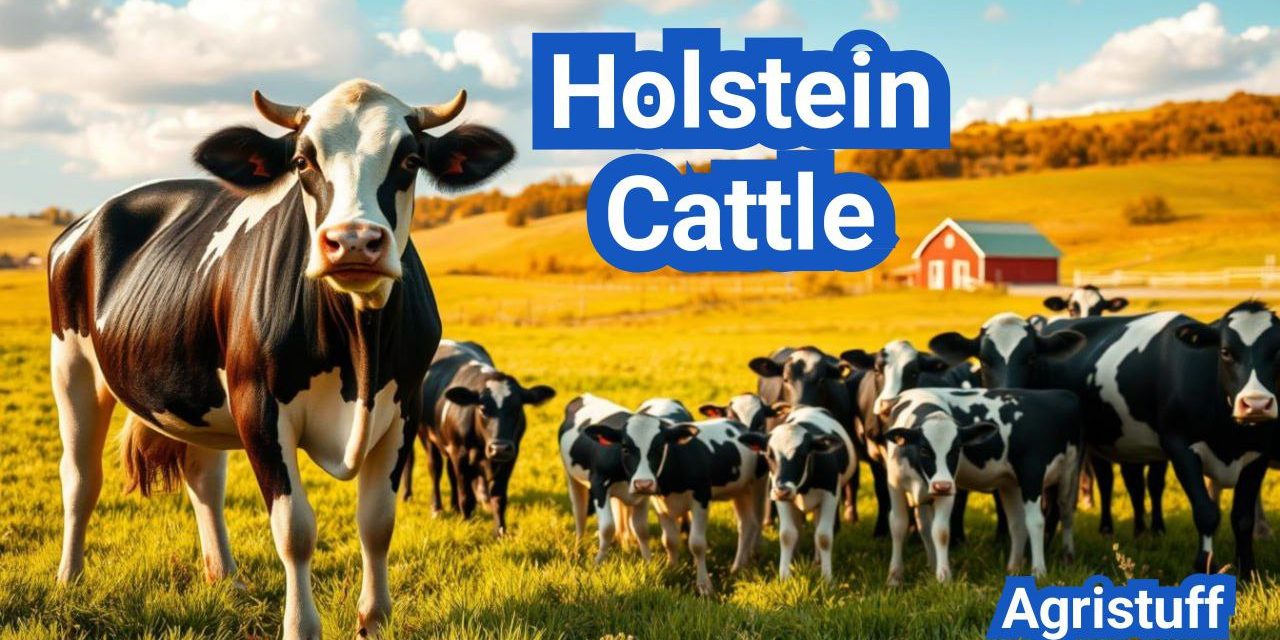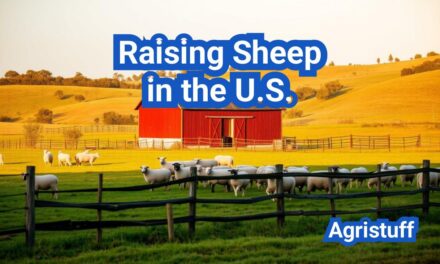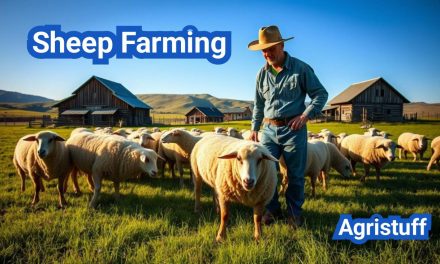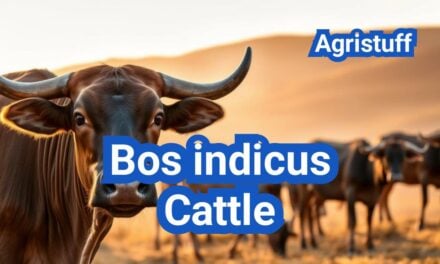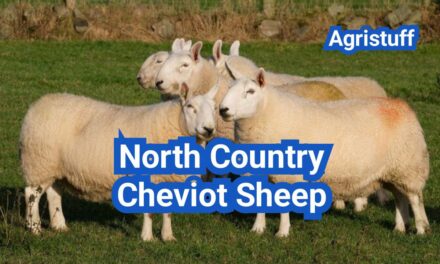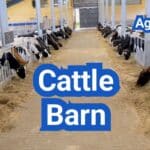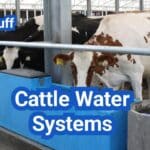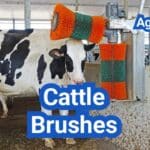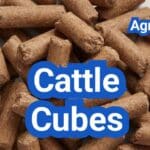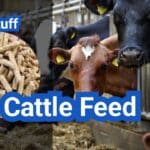The Holstein breed ( Holstein Cattle ) is one of the most recognizable and productive dairy breeds worldwide, known for its distinctive black and white markings.
Originating in the Netherlands, this breed has become a preferred choice for dairy farmers globally due to its exceptional milk production capabilities.
The characteristics of this dairy breed include a robust constitution and a high milk yield, making them a significant part of the dairy industry.
Key Takeaways
- Holstein breed origin and history
- Characteristics of the Holstein dairy breed
- Significance in the dairy industry
- Exceptional milk production capabilities
- Preferred choice for dairy farmers globally
The History and Origin of Holstein Cattle
With roots tracing back to the Netherlands and Northern Germany, Holstein cattle have evolved significantly over the centuries. The breed’s history is deeply intertwined with the agricultural practices of these regions.
European Roots: The Netherlands and Northern Germany
The Holstein breed originated in the Netherlands, where it was known for its exceptional milk production capabilities. The climate and agricultural practices of the region played a crucial role in shaping the breed.
Agricultural practices in the Netherlands during the 18th century were centered around dairy farming, with the Holstein breed being a cornerstone of this industry. The breed’s ability to produce high volumes of milk made it highly sought after.
As quoted by dairy farming historians, “The Holstein breed’s success in the Netherlands was largely due to its adaptability and milk production capabilities.” This adaptability was key to its later success in other parts of the world.
Introduction to North America and Global Spread
The Holstein breed was first introduced to North America in the early 19th century, marking the beginning of its global spread. The breed quickly gained popularity due to its high milk production.
- The first recorded importation of Holstein cattle to the United States was in 1795.
- The breed’s popularity grew rapidly, with many dairy farmers adopting it for its milk production capabilities.
- By the late 19th century, Holstein cattle had become a staple in American dairy farming.
Evolution of the Modern Holstein
Over the years, the Holstein breed has undergone significant selective breeding, leading to the modern Holstein known today. This process has enhanced its milk production capabilities and adapted it to various farming conditions worldwide.
Modern breeding techniques have further improved the breed, making it one of the most popular dairy cattle breeds globally. As noted by experts, “The Holstein breed’s genetic improvement has been a key factor in its global dominance in dairy production.”
Holstein Cattle: The World’s Premier Dairy Breed

Holstein cattle are widely regarded as the premier dairy breed globally, known for their exceptional milk production capabilities. With some Holstein cows producing up to 22,000 pounds of milk per year, it’s no wonder they’ve become the cornerstone of the dairy industry.
Defining Characteristics of Holstein Cattle
Holstein cattle are distinguished by their high milk production efficiency and distinctive black and white or red and white color patterns. Their large size, with mature cows weighing between 1,500-2,000 pounds, and their robust body structure make them well-suited for intensive dairy farming.
The breed’s genetic predisposition for high milk yield has been honed through decades of selective breeding programs. This focus on milk production has made Holsteins the breed of choice for large-scale dairy operations worldwide.
Holstein vs. Holstein-Friesian: Understanding the Terminology
The terms “Holstein” and “Holstein-Friesian” are often used interchangeably, but there are historical differences between them. Originally, the breed was known as Holstein-Friesian, combining the names of the Dutch Holstein and the German Friesian cattle. Over time, the term “Holstein” became more commonly used, especially in North America.
While both terms refer to the same breed, the difference lies in regional terminology rather than genetic makeup. Modern Holstein cattle, regardless of the nomenclature, are recognized for their superior dairy characteristics.
The Holstein’s Global Dominance in Dairy Production
Holstein cattle have achieved global dominance in dairy production due to their exceptional milk yield and quality. They are found in dairy farms across the world, from the United States to Europe, Australia, and beyond.
The breed’s adaptability to various climates and farming systems, combined with their high milk production efficiency, has cemented their position as the leading dairy breed. As the global demand for dairy products continues to grow, Holstein cattle are poised to remain at the forefront of the industry.
Physical Characteristics and Appearance
The physical characteristics of Holstein cattle play a crucial role in their identity as a premier dairy breed. Their distinctive appearance is characterized by specific traits that have been developed over generations of selective breeding.
Size, Weight, and Body Structure
Holstein cattle are known for their large size and robust body structure. On average, Holstein cows weigh between 680-770 kg and stand at a height of 145-165 cm at the withers. Their body structure is designed for optimal milk production, with a well-developed udder and a sturdy skeletal system.
The size and weight of Holstein cattle are significant factors in their dairy production capabilities. Their large size accommodates a substantial udder capacity, allowing for higher milk yields.
Color Patterns: Black and White, Red and White Variations
One of the most recognizable features of Holstein cattle is their color pattern. The traditional and most common coloration is black and white, although red and white variations also exist. The black and white coloring is a result of genetic traits that have been selectively bred to create the distinctive appearance of the breed.
Key characteristics of Holstein color patterns include:
- Predominantly black and white, with clear demarcations between colors
- Variable patterns, with no two animals having the same markings
- Red and white variations, resulting from a genetic variation that affects the production of black pigment
Distinctive Holstein Features
Holstein cattle have several distinctive features that set them apart from other dairy breeds. These include their large size, robust body structure, and characteristic black and white (or red and white) color patterns. Additionally, Holsteins are known for their high milk production and well-developed udders, which are essential for their dairy capabilities.
The combination of these physical characteristics makes Holstein cattle one of the most recognizable and productive dairy breeds worldwide.
Milk Production Capabilities

The Holstein breed is celebrated for its outstanding milk production efficiency, which is a key factor in its widespread adoption in dairy farming. This efficiency is reflected in their ability to produce large quantities of milk, making them a vital component of the global dairy industry.
Average Milk Yield and Production Cycles
Holstein cows are known for their high milk yield, typically producing between 6,000 to 8,000 kg of milk per lactation. The average lactation cycle for a Holstein cow is approximately 305 days, although this can vary based on factors such as nutrition, genetics, and management practices.
The milk yield of Holstein cattle is influenced by their genetic makeup, with selective breeding programs aimed at enhancing this trait. Dairy farmers often focus on optimizing dairy cattle nutrition to support high milk production, ensuring that the cows receive a balanced diet that meets their nutritional needs.
Milk Composition and Quality
The milk produced by Holstein cattle is not only abundant but also of high quality, with a good balance of butterfat and protein. The average butterfat content in Holstein milk is around 3.7%, while the protein content is approximately 3.1%. These components are crucial for the production of various dairy products, including cheese, butter, and milk powder.
The quality of Holstein milk is influenced by several factors, including the cow’s diet, health status, and genetics. Holstein cattle genetics play a significant role in determining milk composition, with some genetic lines being more predisposed to producing milk with higher butterfat or protein content.
Factors Affecting Holstein Milk Production
Several factors can impact the milk production of Holstein cattle, including nutrition, genetics, health, and management practices. Dairy cattle nutrition is critical, as a well-balanced diet is essential for supporting high milk yield. Genetics also play a crucial role, with some Holstein lines being bred specifically for their high milk production capabilities.
Health issues, such as mastitis, can significantly affect milk production, highlighting the importance of effective health management practices. Additionally, factors like milking frequency, cow comfort, and stress levels can influence milk yield, underscoring the need for careful management of Holstein dairy herds.
Holstein Cattle Genetics and Breeding
Understanding Holstein cattle genetics is essential for improving dairy farming productivity. The genetic makeup of Holstein cattle plays a significant role in their milk production capabilities, making genetic research and breeding programs crucial for the dairy industry.
Understanding Holstein Genetic Traits
Holstein cattle possess specific genetic traits that contribute to their high milk production. These traits include genes related to milk yield, fat content, and protein production. Genetic testing has become a vital tool in identifying superior genetic lines, enabling breeders to make informed decisions.
The genetic diversity within the Holstein breed allows for a range of characteristics that can be beneficial under different farming conditions. For instance, some Holsteins may be more resistant to certain diseases, while others may excel in milk production.
Selective Breeding Programs
Selective breeding programs have been instrumental in enhancing the genetic quality of Holstein cattle. By focusing on desirable traits such as high milk yield, fertility, and longevity, breeders have significantly improved the breed over generations.
These programs involve the careful selection of breeding stock based on their genetic merit. Proven sires with high genetic value for milk production traits are used extensively in breeding programs to propagate desirable genes.
Genetic Improvement Strategies
Genetic improvement in Holstein cattle is achieved through a combination of traditional breeding techniques and modern genetic technologies. Strategies include the use of genetic markers to identify genes associated with desirable traits and the application of genomic selection.
Genomic selection involves using DNA testing to predict an animal’s genetic merit for various traits. This approach has accelerated genetic progress in Holstein cattle by allowing breeders to select superior animals at a younger age.
Establishing a Holstein Dairy Herd

The journey to building a thriving Holstein dairy herd involves several critical steps, including choosing the right cattle and facilities. Establishing a successful dairy operation requires a comprehensive approach that considers genetics, nutrition, and infrastructure.
Selecting Foundation Stock
Selecting the right foundation stock is crucial for the success of a Holstein dairy herd. This involves choosing cows and heifers with high genetic potential for milk production. Farmers should look for animals with a strong pedigree and a history of high milk yield.
Key considerations when selecting foundation stock include:
- Genetic merit for milk production traits
- Health status and disease resistance
- Age and reproductive status
- Conformation and structural soundness
Housing and Facility Requirements
Adequate housing and facilities are essential for maintaining the health and productivity of a Holstein dairy herd. This includes providing comfortable living conditions, proper ventilation, and efficient milking systems.
Key components of dairy housing and facilities:
- Free stall barns or compost barns with adequate bedding
- Proper ventilation systems to maintain air quality
- Efficient milking parlors with modern milking equipment
- Adequate manure management systems
Initial Investment Considerations
Establishing a Holstein dairy herd requires a significant initial investment. This includes the cost of purchasing foundation stock, constructing or renovating facilities, and acquiring necessary equipment.
| Investment Category | Estimated Cost | Importance Level |
|---|---|---|
| Foundation Stock | $100,000 – $500,000 | High |
| Facilities Construction/Renovation | $200,000 – $1,000,000 | High |
| Milking Equipment | $50,000 – $200,000 | High |
| Nutritional Consulting | $5,000 – $10,000 | Medium |
| Veterinary Services | $3,000 – $5,000 | Medium |
By carefully planning and managing these aspects, dairy farmers can establish a profitable and sustainable Holstein dairy herd.
Nutrition Management for Holstein Cattle

Proper nutrition is the cornerstone of successful Holstein dairy farming, impacting both milk production and cow health. Holstein cattle require a balanced diet rich in energy, protein, and minerals to support their high milk production capabilities.
Dietary Requirements for Optimal Milk Production
Holstein cows have specific dietary needs that must be met to optimize milk production. Their diet should include:
- High-quality forages such as hay, silage, or pasture
- Concentrates like grains and protein supplements
- Adequate minerals and vitamins
A well-balanced diet ensures that the cows produce high-quality milk while maintaining their overall health.
Feed Formulation and Ration Balancing
Feed formulation and ration balancing are critical components of nutrition management for Holstein cattle. The process involves:
- Analyzing the nutritional content of available feed ingredients
- Formulating a diet that meets the nutritional requirements of the cows
- Adjusting the ration based on factors like milk production levels and cow health
Ration balancing is an ongoing process that requires regular monitoring and adjustments to ensure optimal nutrition.
Feeding Strategies Across Different Life Stages
Holstein cattle have different nutritional needs at various stages of their life cycle. For instance:
- Lactating cows require more energy and protein to support milk production.
- Dry cows need a diet that prepares them for the next lactation cycle.
- Heifers require a diet that supports growth and development.
Implementing feeding strategies tailored to the specific needs of cows at different life stages is crucial for optimizing their health and productivity.
Health Management and Common Concerns

The health and productivity of Holstein dairy herds depend significantly on robust health management practices. Effective health management involves a combination of preventative healthcare protocols, monitoring for common health issues, and maintaining optimal udder health.
Preventative Healthcare Protocols
Preventative healthcare is the cornerstone of maintaining a healthy Holstein dairy herd. This includes regular vaccinations, parasite control programs, and hoof care to prevent lameness. Implementing a comprehensive health program can significantly reduce the incidence of disease and improve overall herd productivity.
Vaccination programs should be tailored to the specific needs of the herd, taking into account factors such as disease prevalence in the area and the herd’s history of disease. Regular parasite control is also crucial, as internal parasites can significantly impact milk production and overall cow health.
Common Health Issues in Holstein Cattle
Holstein cattle are prone to certain health issues due to their high milk production. Metabolic disorders such as ketosis and milk fever are common concerns. Ketosis occurs when the cow’s energy demand exceeds intake, leading to metabolic imbalances. Milk fever, or hypocalcemia, is caused by a sudden drop in calcium levels around calving time.
Other health issues include lameness and reproductive disorders. Lameness can result from poor hoof care or environmental factors, while reproductive issues can stem from a variety of factors including genetics, nutrition, and management practices.
Maintaining Udder Health and Preventing Mastitis
Udder health is critical for both milk production and cow well-being. Mastitis, an inflammation of the udder, is a significant concern in dairy herds. Preventing mastitis involves good milking hygiene practices, regular udder health monitoring, and maintaining a clean environment.
Implementing a mastitis control program that includes practices such as pre- and post-milking teat disinfection, regular somatic cell counting, and dry cow therapy can significantly reduce the incidence of mastitis. Additionally, selecting for genetic traits that enhance udder health can provide long-term benefits.
By focusing on preventative healthcare, addressing common health issues, and maintaining optimal udder health, dairy farmers can improve the overall health and productivity of their Holstein herds.
Reproductive Management

Optimizing reproductive management is key to enhancing the overall efficiency of Holstein dairy operations. Effective reproductive management ensures that cows are bred at the right time, reducing calving intervals and increasing milk production.
Breeding Timing and Methods
Breeding timing is critical in Holstein cattle reproductive management. The use of synchronization protocols and artificial insemination (AI) has become increasingly popular, allowing farmers to control the breeding process more effectively. AI enables the use of superior genetics from top bulls, improving the herd’s overall quality.
The choice of breeding method depends on various factors, including farm size, management practices, and the farmer’s expertise. While AI offers genetic advantages, natural breeding may be preferred in some cases due to its simplicity and lower initial cost.
Pregnancy and Calving Management
Once a Holstein cow is bred, proper pregnancy management becomes essential. This includes regular veterinary check-ups, nutritional monitoring, and preparing the cow for calving. A well-managed pregnancy ensures a healthy calf and a smooth transition into the next lactation cycle.
Calving management involves creating a clean and safe environment for the cow to give birth. Monitoring the cow’s health during calving and providing assistance when necessary can significantly reduce the risk of complications.
Calf Rearing Practices
After calving, calf rearing practices play a crucial role in the future productivity of the dairy herd. This begins with ensuring the calf receives adequate colostrum within the first few hours of birth, followed by a nutritious diet that supports growth and development.
Effective calf rearing involves a combination of proper nutrition, health management, and housing. Farmers must balance the cost of rearing with the potential future benefits of having a productive cow in the herd.
Holstein Cattle Variants and Specialized Types

The Holstein breed encompasses several variants, including red and white, polled, and mini Holsteins. These specialized types offer dairy farmers diverse options tailored to their specific needs and preferences.
Red and White Holsteins
Red and white Holsteins are a color variant of the traditional black and white Holsteins. They originated from the same genetic pool and share many characteristics, except for their coat color. The red factor is a recessive gene, making the red and white coloration less common.
Key characteristics of red and white Holsteins include:
- Similar milk production capabilities as black and white Holsteins
- Identical genetic traits and breeding potential
- Aesthetically distinct due to their red and white coat
Polled Holsteins
Polled Holsteins are a variant that naturally lacks horns. This trait is particularly advantageous for dairy farmers as it reduces the risk of injury to both the animals and handlers.
The benefits of polled Holsteins include:
- Reduced risk of horn-related injuries
- Less need for dehorning procedures, which can be costly and stressful for the animals
- Potential for improved animal welfare and farm safety
Mini or Compact Holsteins
Mini or compact Holsteins are smaller in stature compared to traditional Holsteins. They are bred to be more efficient in terms of feed consumption and space requirements, making them suitable for smaller farms or niche dairy operations.
| Characteristics | Traditional Holsteins | Mini Holsteins |
|---|---|---|
| Size | Large | Compact |
| Feed Efficiency | Moderate | High |
| Milk Production | High | Moderate to High |
Crossbreeding with Holstein Cattle

Crossbreeding is revolutionizing the dairy industry by combining the strengths of Holstein cattle with other breeds. This practice has gained significant attention in recent years due to its potential to enhance dairy cattle productivity and profitability.
Crossbreeding programs involving Holstein cattle are designed to leverage the benefits of hybrid vigor, which results in improved fertility, increased milk production, and enhanced overall health of the dairy herd.
Popular Holstein Crossbreeding Programs
Several crossbreeding programs have gained popularity among dairy farmers. These include:
- Holstein-Jersey crosses, known for their improved fertility and milk quality.
- Holstein-Montbéliarde crosses, which offer enhanced fertility and longevity.
- Holstein-Swedish Red crosses, recognized for their improved health and productivity.
Holstein-Jersey Crosses
Holstein-Jersey crosses are particularly popular due to their ability to combine the high milk production of Holsteins with the rich milk composition of Jerseys. This crossbreeding strategy results in:
- Improved milk quality with higher butterfat and protein content.
- Enhanced fertility and reproductive efficiency.
- Better overall health and longevity of the dairy cows.
Benefits of Hybrid Vigor in Crossbreeding
Hybrid vigor, or heterosis, is a key benefit of crossbreeding dairy cattle. It results in offspring that outperform their parents in terms of productivity and health. The benefits include:
- Increased milk production and quality.
- Improved fertility and reproductive performance.
- Enhanced disease resistance and overall health.
By leveraging hybrid vigor through crossbreeding, dairy farmers can significantly improve the productivity and profitability of their dairy operations.
Holstein Cattle in the Beef Industry
While Holstein cattle are renowned for their milk production capabilities, they also contribute substantially to beef production. This dual role highlights the versatility of Holstein cattle in the agricultural sector.
Role of Holstein Steers in Beef Production
Holstein steers are increasingly being utilized for beef production due to their growth rate and the quality of meat they provide. Dairy farmers often raise Holstein steers for beef as part of their overall farming operation, diversifying their income streams.
The use of Holstein steers in beef production offers several advantages, including faster growth rates compared to some traditional beef breeds and the ability to produce high-quality beef.
Meat Quality and Characteristics
Holstein beef is known for its tenderness and fine marbling, characteristics that make it appealing to consumers. The meat quality is influenced by factors such as genetics, nutrition, and management practices.
Key Characteristics of Holstein Beef:
- Tender and fine marbling
- Good growth rate
- High-quality meat production
Market Opportunities for Holstein Beef
The market for Holstein beef is growing as consumers become more aware of its quality and characteristics. Dairy farmers and beef producers can capitalize on this trend by marketing Holstein beef as a premium product.
| Market Segment | Opportunities | Challenges |
|---|---|---|
| Premium Beef Market | High demand for tender and marbled beef | Competition from other premium beef breeds |
| Dairy-Beef Cross Market | Growing demand for diverse beef products | Need for effective marketing strategies |
By understanding the role of Holstein cattle in the beef industry, farmers and producers can better capitalize on market opportunities and contribute to the diversity of the beef market.
Sustainable Farming Practices for Holstein Herds

As the dairy industry evolves, adopting sustainable farming practices is crucial for the long-term viability of Holstein cattle. The increasing awareness of environmental issues and the need for eco-friendly management systems are driving changes in how dairy farmers manage their herds.
Environmental Impact Considerations
The environmental impact of dairy farming is a significant concern, with issues such as water pollution, soil degradation, and greenhouse gas emissions being major challenges. Holstein dairy farmers must consider these factors when developing their farming practices. Implementing measures to reduce waste and emissions is crucial for minimizing the environmental footprint of dairy farming.
Some of the key environmental considerations include:
- Managing manure effectively to prevent water pollution
- Implementing rotational grazing to maintain soil health
- Reducing energy consumption through efficient farm operations
Implementing Eco-Friendly Management Systems
Adopting eco-friendly management systems is vital for sustainable dairy farming. This involves integrating practices that promote the health and well-being of the cattle, while also protecting the environment. Strategies such as using renewable energy sources, conserving water, and reducing chemical use can significantly contribute to a more sustainable dairy operation.
Farmers can also benefit from:
- Utilizing technology for more efficient farming practices
- Implementing waste reduction and recycling programs
- Creating habitats for biodiversity around the farm
Balancing Productivity with Sustainability
One of the main challenges in sustainable dairy farming is balancing productivity with sustainability. While the primary goal is to maintain high milk production levels, this must be achieved without compromising the environmental and social responsibilities of the farm. By adopting practices that promote both the health of the cattle and the sustainability of the farm, dairy farmers can ensure the long-term success of their operations.
Eco-friendly farming practices not only benefit the environment but can also lead to cost savings and improved public image for dairy farmers. As consumers become more environmentally conscious, the demand for sustainably produced dairy products is likely to increase, providing a market incentive for farmers to adopt sustainable practices.
Economic Impact and Profitability
The profitability of Holstein dairy operations hinges on several key factors, including milk pricing, production costs, and market trends. As the global demand for dairy products continues to rise, understanding the economic dynamics of Holstein dairy farming becomes increasingly important for farmers, investors, and industry stakeholders.
Cost-Benefit Analysis of Holstein Dairy Operations
A comprehensive cost-benefit analysis is crucial for assessing the viability of Holstein dairy operations. This involves evaluating both the direct and indirect costs associated with maintaining a Holstein dairy herd, such as feed, veterinary care, and equipment, against the revenue generated from milk sales and other dairy products.
Key components of a cost-benefit analysis include:
- Initial investment costs, including infrastructure and livestock purchase
- Ongoing operational expenses, such as feed and labor
- Revenue streams, primarily from milk sales but also from cattle sales and breeding services
- Potential risks, including market fluctuations and disease outbreaks
Market Trends and Pricing
Market trends and pricing play a significant role in determining the profitability of Holstein dairy operations. Fluctuations in global milk prices, influenced by factors such as supply and demand, trade policies, and consumer preferences, can significantly impact dairy farmers’ revenues.
Recent market trends indicate a shift towards:
- Increasing demand for sustainable and ethically produced dairy products
- Growing interest in alternative dairy products and plant-based diets
- Advancements in dairy technology, enhancing efficiency and productivity
As noted by a dairy industry expert, “The future of dairy farming lies in its ability to adapt to changing consumer demands while maintaining sustainable practices.”
“Sustainability is no longer a choice but a necessity for dairy farmers looking to remain competitive in a rapidly evolving market.”
Maximizing Return on Investment
To maximize return on investment in Holstein dairy operations, farmers must adopt efficient management practices, invest in technology, and stay informed about market trends. Strategies include optimizing feed conversion rates, improving herd health through preventative care, and leveraging data analytics to inform breeding and production decisions.
Effective strategies for maximizing ROI include:
| Strategy | Description | Potential Benefit |
|---|---|---|
| Genetic Selection | Selecting for high-producing genetic lines | Increased milk production |
| Nutritional Optimization | Tailoring diets to meet the nutritional needs of Holstein cattle | Improved milk quality and quantity |
| Technology Integration | Utilizing data analytics and automation in dairy operations | Enhanced efficiency and reduced labor costs |
The Future of Holstein Cattle in Dairy Farming
The Holstein cattle breed has established itself as a cornerstone of the dairy industry, renowned for its exceptional milk production capabilities and adaptability to various farming systems. As the global demand for dairy products continues to rise, the significance of Holstein cattle is expected to endure.
Advancements in breeding and management practices will likely play a crucial role in shaping the future of Holstein cattle in dairy farming. By leveraging genetic improvements and optimizing nutrition and health management, dairy farmers can enhance the productivity and sustainability of their Holstein herds.
The future of Holstein cattle in dairy farming looks promising, with ongoing research and development aimed at improving milk yield, quality, and the overall efficiency of dairy operations. As the dairy industry continues to evolve, the Holstein breed is poised to remain a vital component, driving innovation and meeting the world’s growing dairy needs.
FAQ
Where did Holstein-Friesian cattle originate?
Holstein-Friesian cattle originated in the Netherlands and northern Germany.
What is the primary use of Holstein-Friesian cattle?
The primary use of Holstein-Friesian cattle is for dairy production due to their high milk yield.
What is a notable characteristic of Holstein-Friesian cattle?
A notable characteristic of Holstein-Friesian cattle is their black and white or red and white color pattern.
How much milk can a Holstein-Friesian cow produce annually?
A Holstein-Friesian cow can produce a significant amount of milk annually, with averages often exceeding 22,000 pounds per year.
What role do Holstein-Friesians play in beef production?
Holstein-Friesians are also used in beef production, particularly Holstein steers, offering an alternative for dairy farmers to diversify into beef.
What is the difference between Holstein and Holstein-Friesian cattle?
The terms Holstein and Holstein-Friesian are often used interchangeably, but they refer to the same breed with high milk production capabilities.
What are the benefits of crossbreeding with Holstein Cattle?
Crossbreeding with Holstein Cattle can enhance dairy cattle productivity and profitability through hybrid vigor.
What are the dietary requirements for optimal milk production in Holstein Cattle?
Holstein Cattle require a balanced diet that includes adequate nutrients to support their high milk production, including proteins, carbohydrates, and minerals.
How can dairy farmers maintain udder health and prevent mastitis in Holstein Cattle?
Maintaining udder health and preventing mastitis involves regular milking practices, hygiene, and monitoring for signs of infection.
What are the advantages of sustainable farming practices for Holstein herds?
Sustainable farming practices for Holstein herds can reduce environmental impact, improve cow health, and contribute to long-term profitability.
How can dairy farmers maximize return on investment in Holstein dairy operations?
Dairy farmers can maximize return on investment by optimizing milk production, managing costs, and staying informed about market trends.
What is the future of Holstein Cattle in dairy farming?
The future of Holstein Cattle in dairy farming is promising, with ongoing breeding and management practices expected to continue improving their productivity and efficiency.
Conclusion of: Holstein Cattle
Holstein cattle are renowned globally as the ultimate dairy breed, famous for their extraordinary milk production, distinctive appearance, and adaptability. Dominating the dairy industry in the United States, Holsteins are indispensable for meeting the high demand for dairy products. This comprehensive guide explores everything about Holstein cattle, from their origin and unique traits to dairy performance and management strategies.
What Are Holstein Cattle?
Holstein cattle, officially known as Holstein-Friesian, are a breed originally developed in the Netherlands. Easily identifiable by their iconic black-and-white color patterns, Holsteins are the leading dairy cattle breed worldwide, known primarily for their unmatched milk production.
Source: Holstein Association USA
Origin and Historical Background
The roots of Holstein cattle trace back to the Friesland region of the Netherlands. Holsteins were imported to the United States in the mid-1800s, rapidly gaining popularity for their exceptional milk yield. Over time, selective breeding further enhanced their productivity, firmly establishing them as the top dairy breed.
Source: Oklahoma State University – Breeds of Livestock
Physical Characteristics of Holstein Cattle
Holstein cattle are large-framed animals, typically exhibiting a striking black-and-white pattern. They have broad shoulders, a deep body, and a well-developed udder, perfectly suited for high-volume milk production. Their mature weight ranges from 1,300 to 1,500 pounds for cows.
Source: The Cattle Site – Holstein Breed Info
Milk Production Efficiency of Holstein Cattle
A key attribute making Holstein cattle the ultimate dairy breed is their extraordinary milk production. On average, a Holstein cow produces about 23,000 pounds of milk per lactation period, significantly outperforming other dairy breeds in volume.
Source: USDA National Agricultural Statistics Service
Nutritional Requirements for Optimal Milk Production
To support their high milk output, Holstein cattle have specific nutritional needs. Diets must provide adequate energy, protein, vitamins, and minerals. Quality forage, supplemented by balanced grain rations, ensures optimal milk production and maintains cow health.
Source: Penn State Extension – Dairy Nutrition
Common Health Issues in Holstein Cattle
Despite their impressive productivity, Holstein cattle are prone to certain health challenges:
- Mastitis (udder infections)
- Lameness due to their large size
- Metabolic disorders like ketosis and milk fever
Effective herd management, regular veterinary checks, and preventive care minimize these issues.
Source: University of Wisconsin-Madison Dairy Herd Management
Management Practices for Holstein Cattle
Effective management of Holstein cattle includes practices such as:
- Proper housing with adequate ventilation and comfort
- Routine veterinary care and vaccination schedules
- Regular hoof trimming and mobility monitoring
Good management practices directly enhance dairy herd productivity and longevity.
Breeding and Genetic Selection of Holstein Cattle
Holstein cattle breeding emphasizes genetic selection for traits such as milk production, fat and protein content, fertility, and longevity. Modern technologies like genomic testing and artificial insemination (AI) have revolutionized genetic improvement in Holstein herds.
Source: National Association of Animal Breeders
Economic Impact of Holstein Cattle on Dairy Farming
The economic contributions of Holstein cattle to dairy farming are substantial, influencing profitability through:
- High milk yields reducing per-unit production costs
- Strong genetics commanding premium market prices
- Consistent performance in commercial dairy operations
Source: Dairy Farmers of America
Environmental Sustainability in Holstein Dairy Farms
Holstein cattle farms can adopt environmentally sustainable practices such as efficient manure management, rotational grazing, and water conservation. These practices enhance sustainability and lower environmental impacts.
Source: Sustainable Agriculture Research & Education (SARE)
Pros of Raising Holstein Cattle
Advantages of raising Holstein cattle include:
- Exceptional milk production capabilities
- High marketability and widespread genetic availability
- Efficient feed conversion into milk
- Strong adaptability to various management systems
These strengths make Holsteins invaluable in modern dairy farming.
Source: University of Vermont Extension
Cons of Holstein Cattle
Despite their benefits, Holstein cattle have certain drawbacks:
- High nutritional and management requirements
- Greater susceptibility to certain health issues
- Intensive management practices needed to maximize production potential
Addressing these effectively ensures successful dairy farming with Holsteins.
Source: Cornell University Dairy Management
Crossbreeding with Holstein Cattle
Crossbreeding Holstein cattle with other dairy breeds can enhance hybrid vigor, milk quality, and overall herd health. Common crosses include Holstein-Jersey, combining Holstein’s high milk yield with Jersey’s high butterfat content.
Source: Iowa State University Extension
Final Thought
Holstein cattle represent the pinnacle of dairy breeds, excelling in milk production, genetic reliability, and economic value. With effective management practices, nutritional strategies, and health care, Holsteins can deliver remarkable productivity, sustainability, and profitability for dairy farms worldwide.

